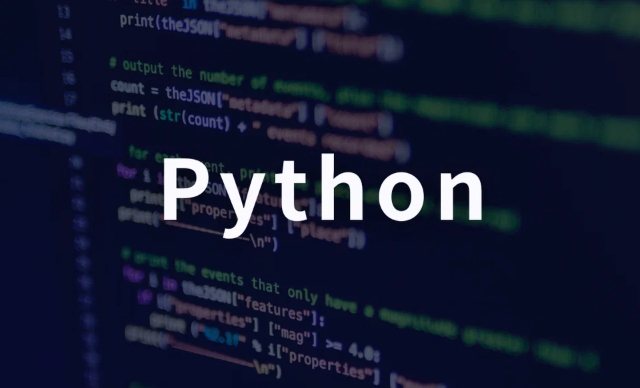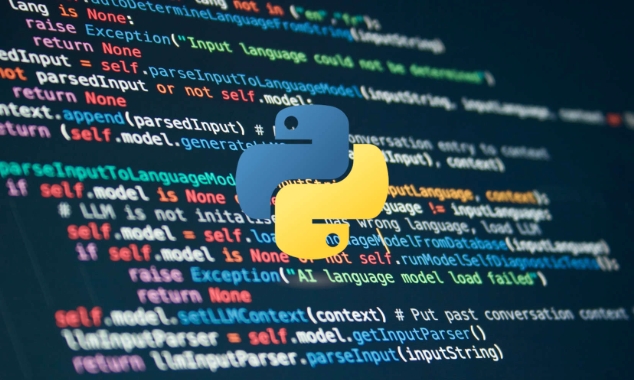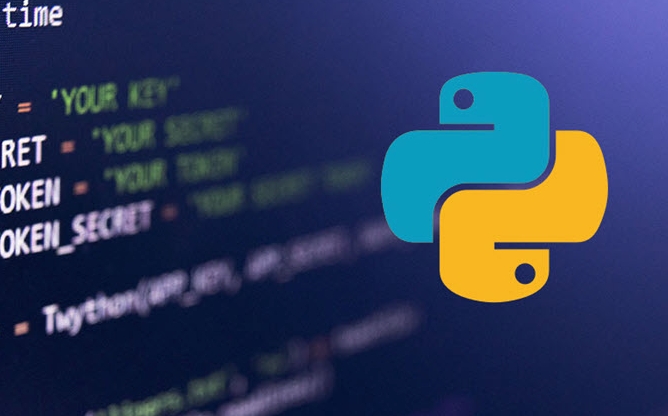Implementing Caching Strategies in Python Web Applications
Jul 23, 2025 am 01:47 AMTo implement a cache policy in Python web applications, you need to choose the right cache type, set the cache time reasonably, and use it in combination with the scenario. 1. Select the cache type: Small applications can be cached with memory (such as Flask SimpleCache), temporary large amounts of data can be cached with file, and production environments are recommended for Redis or Memcached to support distributed deployment. 2. Cache response results: Use the decorator provided by the framework such as @cache.cached() of Flask or @cache_page() of Django to cache highly accessed pages or interfaces. 3. Key cache dynamic data: manually set cache keys to achieve more flexible data cache, avoiding waste and conflicts. 4. Set a reasonable expiration time and actively update: Static content can be set to have a longer cache time, user-related data should be set to have a shorter time and cache should be automatically cleared when data is updated. Rationally designing cache structures and strategies can improve performance and avoid cache penetration, avalanches and other problems.

Implementing caching strategies in Python web applications is a key means to improve performance and response speed. Caching can reduce the pressure on the database by repeated requests, while speeding up page loading and improving user experience. The key is to choose the right cache type, set a reasonable cache time, and use it flexibly in combination with specific scenarios.

Use the appropriate cache type
Common caching methods in Python web applications include memory cache, file cache and distributed cache (such as Redis, Memcached). Which method to choose depends on your application size and deployment environment.
- Memory Cache : Suitable for small applications or development environments, such as Flask's
SimpleCacheor Django's local memory cache. Fast speed, but data will be lost after restart. - File Caching : It is suitable for temporarily cached large amounts of data, but the disadvantage is that the read and write speed is not as good as memory.
- Redis / Memcached : Suitable for production environments and distributed deployments, supports persistence, cross-node shared cache, and stable performance.
If it is an application deployed on multiple servers, it is recommended to use Redis as the cache backend first.

Cache response results in view functions
Many web frameworks provide decorators to simplify cache operations. For example, in Flask, @cache.cached() can be used to cache the output of the entire view:
@app.route('/data')
@cache.cached(timeout=300) # Cache for 5 minutes def get_data():
return fetch_expensive_data() There is also a similar decorator @cache_page() in Django, which is also very convenient to use:

from django.views.decorators.cache import cache_page
@cache_page(60 * 15) # Cache for 15 minutes def my_view(request):
...This method is suitable for caching pages or interfaces that do not change frequently and access frequently.
Keypad dynamic data
Sometimes we don’t want to cache the entire page, but cache some data with high computational cost, such as database query results or complex calculations. At this time, you can manually use the cache key to control it.
For example:
user_profile = cache.get(f'user_profile_{user_id}')
if not user_profile:
user_profile = fetch_user_profile_from_db(user_id)
cache.set(f'user_profile_{user_id}', user_profile, timeout=3600)The advantage of this is that it is more flexible, and it can dynamically generate cache keys based on users, parameters, etc. to avoid cache waste or conflicts.
Set a reasonable expiration time and update mechanism
Cache is not a one-time thing. Setting an expiration time too short will cause frequent rebuilding of caches and lose the meaning of caches; setting too long may cause data inconsistency.
- For static content (such as configuration, public data), a longer cache time (such as 24 hours).
- For user-related data or frequently updated data, it is recommended to set a short time (such as within 1 hour) and actively clear the cache when the data is updated.
An example of actively clearing cache:
cache.delete(f'user_profile_{user_id}')This ensures that users will not see expired cached content after updating the information.
Basically that's it. The cache strategy does not seem complicated, but it is easy to ignore details in actual applications, such as cache penetration, cache avalanche and other issues. Only by rationally designing the cache structure, setting expired strategies, and using it flexibly according to business needs can the value of cache be truly exerted.
The above is the detailed content of Implementing Caching Strategies in Python Web Applications. For more information, please follow other related articles on the PHP Chinese website!

Hot AI Tools

Undress AI Tool
Undress images for free

Undresser.AI Undress
AI-powered app for creating realistic nude photos

AI Clothes Remover
Online AI tool for removing clothes from photos.

Clothoff.io
AI clothes remover

Video Face Swap
Swap faces in any video effortlessly with our completely free AI face swap tool!

Hot Article

Hot Tools

Notepad++7.3.1
Easy-to-use and free code editor

SublimeText3 Chinese version
Chinese version, very easy to use

Zend Studio 13.0.1
Powerful PHP integrated development environment

Dreamweaver CS6
Visual web development tools

SublimeText3 Mac version
God-level code editing software (SublimeText3)
 How to handle API authentication in Python
Jul 13, 2025 am 02:22 AM
How to handle API authentication in Python
Jul 13, 2025 am 02:22 AM
The key to dealing with API authentication is to understand and use the authentication method correctly. 1. APIKey is the simplest authentication method, usually placed in the request header or URL parameters; 2. BasicAuth uses username and password for Base64 encoding transmission, which is suitable for internal systems; 3. OAuth2 needs to obtain the token first through client_id and client_secret, and then bring the BearerToken in the request header; 4. In order to deal with the token expiration, the token management class can be encapsulated and automatically refreshed the token; in short, selecting the appropriate method according to the document and safely storing the key information is the key.
 Explain Python assertions.
Jul 07, 2025 am 12:14 AM
Explain Python assertions.
Jul 07, 2025 am 12:14 AM
Assert is an assertion tool used in Python for debugging, and throws an AssertionError when the condition is not met. Its syntax is assert condition plus optional error information, which is suitable for internal logic verification such as parameter checking, status confirmation, etc., but cannot be used for security or user input checking, and should be used in conjunction with clear prompt information. It is only available for auxiliary debugging in the development stage rather than substituting exception handling.
 What are python iterators?
Jul 08, 2025 am 02:56 AM
What are python iterators?
Jul 08, 2025 am 02:56 AM
InPython,iteratorsareobjectsthatallowloopingthroughcollectionsbyimplementing__iter__()and__next__().1)Iteratorsworkviatheiteratorprotocol,using__iter__()toreturntheiteratorand__next__()toretrievethenextitemuntilStopIterationisraised.2)Aniterable(like
 What are Python type hints?
Jul 07, 2025 am 02:55 AM
What are Python type hints?
Jul 07, 2025 am 02:55 AM
TypehintsinPythonsolvetheproblemofambiguityandpotentialbugsindynamicallytypedcodebyallowingdeveloperstospecifyexpectedtypes.Theyenhancereadability,enableearlybugdetection,andimprovetoolingsupport.Typehintsareaddedusingacolon(:)forvariablesandparamete
 How to iterate over two lists at once Python
Jul 09, 2025 am 01:13 AM
How to iterate over two lists at once Python
Jul 09, 2025 am 01:13 AM
A common method to traverse two lists simultaneously in Python is to use the zip() function, which will pair multiple lists in order and be the shortest; if the list length is inconsistent, you can use itertools.zip_longest() to be the longest and fill in the missing values; combined with enumerate(), you can get the index at the same time. 1.zip() is concise and practical, suitable for paired data iteration; 2.zip_longest() can fill in the default value when dealing with inconsistent lengths; 3.enumerate(zip()) can obtain indexes during traversal, meeting the needs of a variety of complex scenarios.
 Python FastAPI tutorial
Jul 12, 2025 am 02:42 AM
Python FastAPI tutorial
Jul 12, 2025 am 02:42 AM
To create modern and efficient APIs using Python, FastAPI is recommended; it is based on standard Python type prompts and can automatically generate documents, with excellent performance. After installing FastAPI and ASGI server uvicorn, you can write interface code. By defining routes, writing processing functions, and returning data, APIs can be quickly built. FastAPI supports a variety of HTTP methods and provides automatically generated SwaggerUI and ReDoc documentation systems. URL parameters can be captured through path definition, while query parameters can be implemented by setting default values ??for function parameters. The rational use of Pydantic models can help improve development efficiency and accuracy.
 How to test an API with Python
Jul 12, 2025 am 02:47 AM
How to test an API with Python
Jul 12, 2025 am 02:47 AM
To test the API, you need to use Python's Requests library. The steps are to install the library, send requests, verify responses, set timeouts and retry. First, install the library through pipinstallrequests; then use requests.get() or requests.post() and other methods to send GET or POST requests; then check response.status_code and response.json() to ensure that the return result is in compliance with expectations; finally, add timeout parameters to set the timeout time, and combine the retrying library to achieve automatic retry to enhance stability.
 Setting Up and Using Python Virtual Environments
Jul 06, 2025 am 02:56 AM
Setting Up and Using Python Virtual Environments
Jul 06, 2025 am 02:56 AM
A virtual environment can isolate the dependencies of different projects. Created using Python's own venv module, the command is python-mvenvenv; activation method: Windows uses env\Scripts\activate, macOS/Linux uses sourceenv/bin/activate; installation package uses pipinstall, use pipfreeze>requirements.txt to generate requirements files, and use pipinstall-rrequirements.txt to restore the environment; precautions include not submitting to Git, reactivate each time the new terminal is opened, and automatic identification and switching can be used by IDE.






